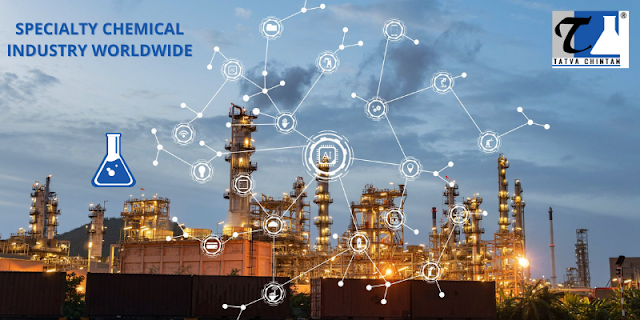What Is The Significance Of Specialty Chemicals?
The development of a nation's industrial and agricultural sectors depends heavily on the chemical industry. It supplies raw materials for many downstream industries, including those that produce papers, paints, textiles, soaps, detergents, and more.
This industry serves numerous end-use application industries and encompasses 80,000+ products. In India, the chemical industry employs over 2 million people. Leading specialty chemical manufacturers are working to improve raw material availability and reduce their carbon footprint.
The market for specialty chemicals has grown in several applications, which has boosted the global market in numerous regions. Growing consumer demand from end-user industries like food, textiles, and transportation is one of the main factors fueling market expansion.
Understanding Specialty Chemicals:
Specialty chemicals are essential substances or compounds that offer various effects. They are applicable in many other industrial sectors. Automotive, aerospace, food, cosmetics, agriculture, manufacturing, and textiles are some sectors that heavily rely on it. They could be chemical formulations or isolated chemical compounds whose chemical makeup affects the final product.
The primary distinction between specialty and commodity chemicals is the extensive research and development that goes into their creation.
Unlike commodity chemicals, which have dozens of varied applications, they only have one or two core uses.
Based on their uses in the end-user industry, the specialty chemicals can get segregated into several categories, including personal care ingredients, dyes and pigments, agrochemicals, polymer additives, water chemicals, textile chemicals, and application-driven segments.
Specialty Chemical Industry Worldwide
Given that the global chemicals market is expected to reach USD 4.0 trillion in 2022, this industry is booming. The global chemical industry is 80% made up of commodity chemicals, with specialty chemicals making up the remaining 20%. When compared to commodity chemicals, specialty chemicals differ due to the extensive product R&D and innovation required, which frequently results in higher margins, greater profitability, and lower Capex intensity.
A global overview of specialty chemicals
The specialty chemicals market reached USD 805 billion in 2019 after expanding at a CAGR of 5.7% over the previous five years. By 2025, the experts project the growth of 6.4 percent annually to reach USD 1.2 trillion. The production of chemicals has significantly shifted away from Europe, North America, and Asia over the last few decades.
The rise of China as a dominant player has been one of the most noticeable trends in the global chemicals industry. China's share of the global chemicals industry increased from 6% in 2000 to approximately 25% in 2020, reflecting this.
Specialty Chemical Trade Flows
Due to the paradigm shift in manufacturing activity and consumption growth over the past few decades, the Asian markets have benefited in terms of specialty chemicals. Previously imported from the EU and North America, Asia has evolved in a net exporter of several specialty chemicals.
China has made a name for itself as one of the top exporters of specialized chemicals to other nations worldwide. However, India is starting to emerge as a significant player in this sector due to China's economic downturns and the US-China trade war.
Indian Specialty Chemical Industry
The Indian specialty chemicals market grew at a CAGR of about 11% between 2014 and 2019. Experts anticipate growth at a CAGR of 12% over the following five years. It is overly fragmented with so few players in the sub-segment, including UPL, the only domestic producer of specialty chemicals with net sales exceeding USD 1 billion and a worldwide manufacturing network. The size of a company's operation is also a crucial differentiator across sub-segments because it enables them to capture a massive portion of the customer's spending power. Global customers expect their suppliers to follow compliance standards. These standards get accepted everywhere, which presents a significant barrier to entry for scaled-up businesses in the sector.
Conclusion
One of the driving forces behind the growth of the Indian specialty chemicals market is the combination of low manufacturing costs, a ready supply of skilled labor, and a track record of producing goods of the highest quality in the world.
Various companies operate on a smaller scale and cannot match the sales of their Chinese counterparts, which is one of the segment's limiting factors due to the lack of feedstock supply. It continues to be one of the main justifications for India importing chemicals.
Despite this, the Indian specialty segment will resume strong growth in the coming years. It is due to China's declining market share in the chemical industry and the US-China trade war, which will provide Indian businesses with a golden opportunity to expand.






Comments
Post a Comment